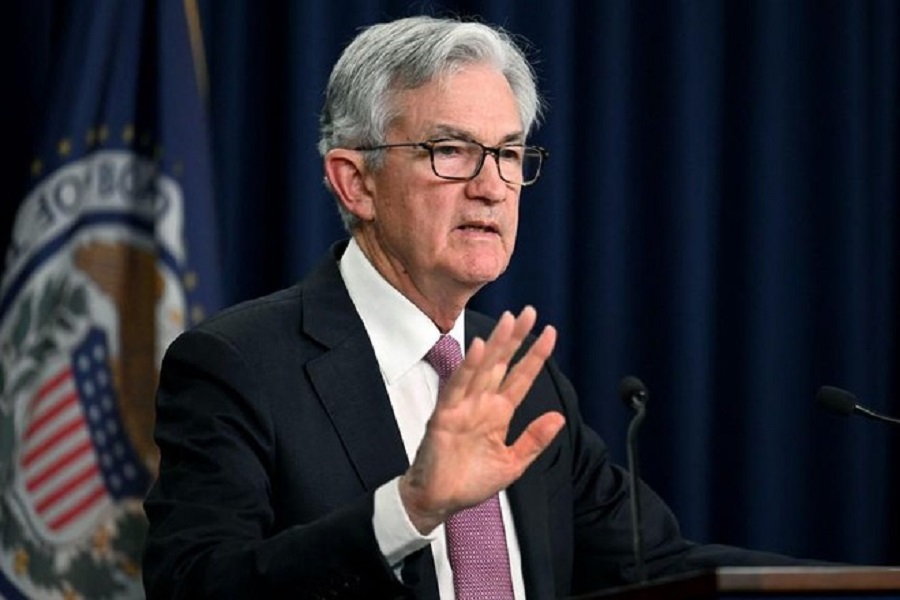Will the FED lower rates regardless of the inflation target?
2024 is expected to be a year in which major central banks fail to reach their (mostly) 2% inflation target, but cut rates nonetheless. There’s nothing controversial in this.

As Fed Chair Powell remarked recently, if you wait until inflation has fallen to the target you are probably acting too late.
>> Will central banks cut rates as expected?
As Fed Chair Powell remarked recently, if you wait until inflation has fallen to the target you are probably acting too late. What’s more, markets not only appear comfortable with this idea but seem to be pushing for rate cuts harder than the central banks themselves. But there are dangers in such a strategy. Indeed, cutting rates too early could prove a costlier mistake than waiting too long to hike them in the first place.
It is in the US where the picture is not just more important than anywhere else, given the pivotal role US rates and the dollar play in the global economy, but also more opaque given that the Fed no longer has a point target, or even a target range, for inflation. Instead, the Fed has a target for ‘average’ inflation.
Mr. Steve Barrow, Head of Standard Bank G10 Strategy, doesn’t know the length of time over which such an average is meant to apply; he is not even sure if the Fed knows. But what he knows is that the system does not actually work like an averaging mechanism at all. That’s because an average implies that inflation spends some time above the ‘target’ and some time below. If it is always above (or below), the average is changing and that rather moves away from the philosophy that central banks should aim to keep the public’s inflation expectations constant at levels close to the inflation target. If it is clear that the Fed is allowing the target to drift up then these expectations will become unanchored. But this is exactly what the Fed is doing because it is clear that its average inflation target is not a symmetric one. In other words, periods in which inflation undershoot target should be followed by above-target inflation for a period of time; but this does not work in reverse.
Hence, right now, the Fed is not looking to drive inflation below target for a period of time, but merely get back to 2%. This policy was arguably correct when the Fed’s problem was perennially undershooting inflation, as we saw in the decades through to the pandemic. It was correct because this inherently deflationary bias in the economy risked zero policy rates and continual quantitative easing; states of affairs that are not optimal for a policymaker.
The question today is whether the surge in inflation has destroyed this disinflationary or deflationary bias, meaning that it is wrong to maintain such an asymmetrically biased inflation target. This year we are likely to find out just whether this is the case.
All the indications from the December FOMC meeting are that the Fed will deliver policy easing while inflation may be ‘stuck’ at levels above 2%. But does this pose a big risk to the bond market and the dollar? Mr. Steve Barrow is not so sure.
For one thing, there’s clearly a tide of opinion within financial markets and academia that inflation targets might be too low. Central banks like the Fed seem very unlikely to change these targets but the Fed, at least, has given itself more wiggle room than the likes of the ECB or BoE that maintain fixed inflation targets.
>> Will the US dollar fall as rates are cut?
Another issue, in a similar vein, is that it may be better to have inflation that’s a little higher than target over time than push the economy into submission, and possible deflation, by bearing down too hard on price pressures with punitive policy rates.
In other words, Mr. Steve Barrow thinks that bond markets globally won’t be too perturbed if US PCE inflation hovers above the 2% level for a protracted period of time. But the danger clearly arises if inflation starts to increase materially, and particularly if the Fed suggests that even this still fits with its average-inflation targeting system.
“We don’t think this will happen, but we do think that inflation will prove harder to reduce than the markets seem to expect and hence we believe that the Fed won’t start to cut rates as early as the spring/summer, as is priced into the market but will, instead, wait until the autumn. That’s a modest delay and not, in our view, sufficient to upset the bond market significantly”, said Mr. Steve Barrow.








